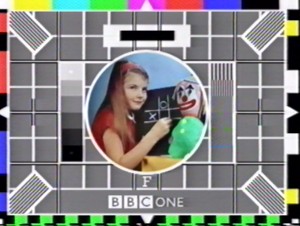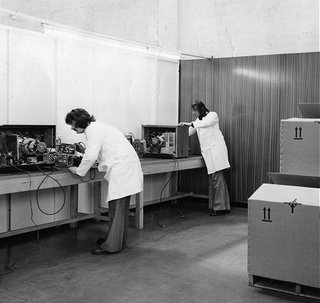 These well worn badges were bought and made at the Leicester Show by one of the dealers. I must admit that sometimes I stayed incognito at rallies!
These well worn badges were bought and made at the Leicester Show by one of the dealers. I must admit that sometimes I stayed incognito at rallies!
Radio Rallies were great events for Radio Amateurs! It was a chance to meet others amateurs that you talked to on the Radio and buy equipment and components from dealers that normally would advertise in Radio Communication Magazine or Short Wave Magazine. You could get some real bargains!
In 1969 I went to my very first Radio Rally at Preston. The venue was at the T.A. Headquarters on Deepdale Rd, next to the football ground. I only had about 50p to spend! I was amazed to see so much equipment all under one roof. I came away with a huge bag of mixed components which lasted me for years afterwards.
During the 70's and 80's I travelled to many Rallies on Sundays, Drayton Manor was one of my favourites and in 1982 when I went down with Kath and little Jacquie now 2 years old, it snowed...at the end of April! The whole thing was a disaster as most of the Rally was set in large Marquees. I remember carrying Jacquie freezing cold and unable to use the buggy because the snow was so deep. To top it all, Kath lost her engagement ring in the snow!
Rallies I went to in the 70's and 80's include: Drayton, Leicester, Belle-Vue (Manchester), Bolton (Silverwell St and Horwich Leisure Centre), Bury (Castle Leisure Centre), Telford (a pain to get to!) I went to few other 'odd' ones as well.
The best, without doubt, was the Leicester Show at Granby Hall. A brilliant rally where you were guaranteed to get everyhing on my shopping list and some great bargains (70cm Transverter to match my FT101E for 30 quid...boxed and new!!) Could spend hours at Birkitt's stand and buy hard to get components dead cheap! I actually took time off work to go to the Leicester Show as it was a three day event.
In the late 80's I had my own stand at the Bolton Rally in Silverwell St and the Bury Rally just to sell off my own 'junk' I really enjoyed it!
Sadly, Radio Rallies are not what they were....the best ones have now gone, and the ones that are left have lost the atmosphere and appeal. Although, it is the Blackpool Rally next week...might just have a look!
In the Digital World, Radio Rallies have been replaced by 'Computer Fairs' ...more on this later!






